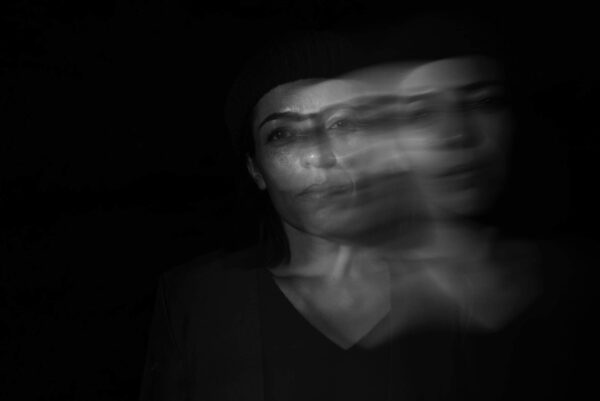FG Founder Michele Pernetta talks about how yoga can help ease some of the physical and mental symptoms women face during the menopause.
Yoga has long shown itself to be very useful to women experiencing the changes associated with the menopause. Yoga’s combination of poses which alternate activity with relaxation and mix of softer poses with more strenuous poses help bring balance to the whole body. Yoga has been shown to minimize mood swings, balance hormones, increase vitality and offer a sense of deep relaxation.
A 2008 study by Dr R Chattha, of the Swami Vivekananda Yoga Anusandhana Samsthana in Bangalore of 120 women between the ages of 40 and 55 showed that after eight weeks of moderate yoga, women in the yoga group showed a significant reduction in hot flushes, night sweats and sleep disturbances.
Yoga performed in a heated room specifically, as we do in Fierce Grace studios has many benefits. While it may seem counter intuitive to go in a hot room when one is suffering from hot flushes, the hot yoga practice has been shown to be very effective in minimizing some of the symptoms of menopause and many report a reduction in hot flushes. The hot room helps to release blockages both physical and emotional, flushes the body and mind of certain toxins, while deep breathing calms the nervous system while stretching and sweating is cathartic.
A healthy, energized and detoxified body will cope much better with the changes associated with menopause. Yoga is unsurpassed as a way of dealing with the challenges life throws at us including the menopause, returning us to our natural state, releasing stress and getting us fit, healthy, strong and flexible.
Reducing the Symptoms of Menopause through Yoga
A regular balanced yoga practice such as we practice in the Fierce Grace Method can help alleviate the wide and sometimes bewildering range of menopause symptoms.
Calming the Nervous System
Reducing nervous tension, calming the nerves and reducing stress and anxiety will be welcome to many women going through menopause.
Restorative postures such as Half Tortoise, Savasana and Standing Separate Leg head to Knee can relax the nervous system and may improve the functioning of the endocrine system (especially the hypothalamus, the pituitary gland, the thyroid, and the parathyroid glands), which helps the body adapt to hormonal fluctuations. Meanwhile deep breathing Pranayama exercises have been widely credited with calming the nervous system, bringing mental relaxation and reducing high blood pressure and irritability.
We do not perform extreme inversions in Fierce Grace (such as Headstand and Shoulder Stand, which have been shown to sometimes aggravate hot flushes) but we do gentler inversions (Cartwheel, Separate Leg Stretching, Prasarita, Camel) so women are able to reap the benefits of inversions and gain relief from anxiety and irritability without potentially aggravating the neck. Spinal Twists as we perform at the end of most of our classes are also well known relievers of nervousness and tension.
Hot Flushes
No one really knows what causes hot flushes. Some believe the hypothalmus may be involved, or that hormonal fluctuations may be causing irritation to the nerve endings, causing blood vessels to over dilate causing the flush
Most researchers (as well as many menopausal women) agree that stress and fatigue tend to increase these episodes. Yoga reduces stress and fatigue. Calming and balancing the adrenals, releasing stress, detoxifying the body and teaching the practitioner how to breath correctly, these are all beneficial tools in the journey through the menopause. In Ayurveda, menopause symptoms are treated based on your Dosha, or individual constitutional type, by bringing harmony to the energies Pitta, Kapha and Vata Fire in each individuals case, as each type, or Dosha will experience menopause differently.
Some women expressed concern about the heated room in Hot yoga studios in relation to their hot flushes. Contrary to their concern, the heated room allows the sequence to work deeper and faster and in fact has had the opposite effect on the hot flushes, reducing rather than aggravating them.
Hormonal Balance
Certain yoga poses have been shown to assist in hormonal balance, a positive effect for women of all ages.
The Spine Strengthening (Backbending) Series we practice in Fierce Grace classes is good for the uterus and ovaries, bringing fresh oxygenated blood to the deeper internal organs, and helping to balance the osmotic pressure in the kidneys (and aids in eliminating water retention).
Half Tortoise Pose can help in the secretion of enzymes, hormones and acids by pushing up against the internal organs and is good for the thyroid, parathyroid and pituitary by sending increased circulation to the head and neck.
Standing Separate Leg Head to Knee Pose is reported to balance melatonin and serotonin, the feel-good hormone and the sleep wake cycle hormone respectively. Serotonin and melatonin can also be increased via deep breathing, and oxygenating the blood, such as the controlled breathing we practice in a yoga class..
Weight Gain
Some menopausal related weight gain can be attributed to hormonal fluctuations, which Yoga can help to balance.
The heat (either from a hot room or that generated from your practice) creates vasodilation, so more blood is delivered to the muscles. This allows oxygen in the blood to detach from the haemoglobin more easily. Warm muscles can burn fat and utilize fatty acids more easily. Cold muscles are less efficient at this so fat can potentially end up lining the arteries.
By building muscle we can more efficiently burn fat. Many poses are reported to help return the metabolism to normal through compression and extension of the thyroid and pancreas such as Standing Separate Leg Head to Knee Pose and Head to Knee Pose. Other poses such as Balancing Stick, Aeroplane, Plank and many more, raise the heart rate and respiration giving a boost to the cardiovascular system. A study in the Journal of Complementary and Integrative Medicine showed six months of yoga reduced cholesterol and improved thyroid function.
Exercising in the heat is well known to burn more calories than exercising in cooler temperatures. Hot Yoga specifically also flushes the lymph glands by deep compressions and extensions helping detoxify and cleanse the body, useful when balancing weight or dealing with water retention.
Countless students across the world have successfully lost large amounts of weight safely and gradually with Fierce Grace and Hot Yoga in general. Weight loss is more about a gradual balancing of the body and hormones, intelligent exercise, detoxification, increasing lean muscle mass, better eating habits and a lifestyle change as opposed to a quick fix. Yoga is an excellent way to achieve this.
Aching Joints
Many women suffer joint pain and aching due to hormonal fluctuations. 104 degrees is the working temperature of your muscles and joints, at which temperature your synovial fluid is thinned and can more effectively lubricate your joints. This is the ambient temperature of the heated room, so once your body is warm, you do not lose your valuable heat to cold air around you.
Fatigue and mental burnout
Fatigue is second only to hot flushes as something many women suffer during menopause. Diminishing progesterone could be the cause. Depleted adrenal glands could also be part of the problem and yoga has been shown to be useful in restoring balance to burned out adrenals.
The same postures that can help counter depression (see below) such as backbends, chest openers and inversions can also help focus a mind depleted by fatigue. These poses can increase blood to the brain and encourage deep, focused breathing can improve mental alertness. Savasana (Corpse Pose), the final pose of most yoga classes including FG classes, can also soothe the nerves, calm the mind and put the body into a state of repose. Backbends are also useful because they encourage the chest and the heart to open and often bring renewed energy, determination, and feelings of wellbeing. They improve respiration and circulation and help lift the spirits.
Other poses and practices that may help with mental clarity include, Spinal Twist, Half Tortoise and Pranayama breathing. Standing Separate Leg Head to Knee is good for people struggling with loss of memory, whilst Standing Head to Knee also improves concentration as increased circulation is delivered to the head.
Anxiety
During perimenopause, oestrogen spikes (or progesterone plummets) causing anxiety, nervousness and irritability. The increased blood supply to the head and brain in forward bends help calm the mind and relax the nerves, reducing irritability and mental tension as you shut out external distractions and stimuli, reducing the effects of stress. The nervous system then receives the signal that all is well, and the adrenals and sympathetic nervous system stop working so hard.
Insomnia
If insomnia is a problem, inversions can sometimes help because they ground the body's energy. They give us a fresh look at the world from upside down. When followed by restorative postures, as we do in the Floor Series of many Fierce Grace classes, they encourage a deep state of rest. Specific poses such as Half Tortoise have also been shown as being helpful for insomnia, and Hot Yoga is well known for helping people with insomnia too.
Depression and mood swings
Anyone suffering from depression, should talk to a medical professional. Yoga is not a substitute for professional medical help.
However yoga can be of great assistance with the some of the symptoms of depression. A study at California Medical University showed 8 weeks of yoga significantly reduced symptoms of depression.
Backward bends specifically have been shown to be some of the best poses to assist with feelings of well-being as they stimulate the adrenals. Also, the heart and lungs open so they can take in more oxygen. Chest-expanding poses like backbends energise the body by improving respiration and circulation, and open the emotional centres of the body that tend to get closed down during life’s hard times, and this can counter feelings of depression.
Standing Separate Leg Head to Knee Pose, Aeroplane and Balancing Stick (all found in the Balancing series of Fierce Grace classes) whilst not technically inversions can also help in the same way as they also bring the head down level with heart while increasing heart rate and respiration, thus bringing increased energy to the head and brain.
The Nose Kapalbhati breathing exercise may also be useful, as it stimulates the fluid between the frontal lobe and the skull bringing a sense of well-being, energy and optimism.
People also find the heat we practice in at FG studios cathartic. It has the effect of relaxing you on a deep level, allowing you to go into places you couldn’t normally reach, and deal with old injuries, scar tissue, and even mental and emotional blockages you don’t normally get the opportunity to look at in normal daily life. Just seeing your sweat falling off you and onto the floor assists us in feeling we are letting everything we no longer need fall away.
The Magic of Yoga for the Menopause
What might make Yoga such a powerful tool for the Menopause is that it is meditational, it allows us time to simply be and teaches us how to control our minds. It teaches us to “go with the flow” and accept ourselves. The menopause can be difficult emotionally and yoga allows us to accept we are constantly changing, embrace these changes, and be responsible and positive in our response to them.
Yoga is ultimately a spiritual practice, which enriches us as people, and teaches us love and compassion for ourselves and others. Women of all ages can benefit from this. Yoga is a support, as an oasis, a safe place to work through challenges, our own special time to live in this moment and accept ourselves as we are.


